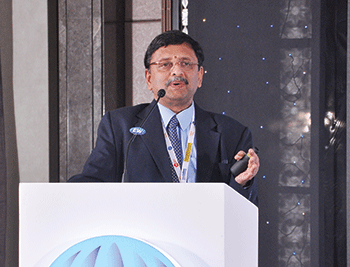Corporate intervention compulsion

As India transforms into a developed nation and a $5 trillion economy during the next decade, the education system will require major overhaul. Currently, almost 40 million youth are enrolled in the country’s estimated 800 universities and 39,000 colleges. Moreover, 150 million school-leaving children sign up for some form of education or training for a vocation, including skilling certification and ITI diplomas.
Yet we have a paradoxical situation. On one side, we have millions of students streaming out of the education system and on the other, multiple surveys indicate they are incompetent and unemployable. In almost every domain ranging from artificial intelligence to analytics, VLSI-embedded systems, mechatronics, marketing or even carpentry to plumbing, the percentage of employable youth is a mere 6-25 percent. The India Skill Report 2018 of CII-People Strong says that over 90 percent of employers feel certified graduates don’t have sufficient skills. Indian industry has huge problems mobilising human resources ranging from competent managers to shop-floor employees.
The challenge is how to bridge this huge demand-supply gap at every point of the supply chain. All surveys from the decade-old Boston Consultancy Report India at 75 to Teamlease’s recent report to the Union human resource development ministry and several Niti Aayog reports, highlight that India’s manufacturing and services sectors will need between 1-2 million youth every month for the next two decades, if the economy is to attain double-digit growth.
India’s tragedy is that we have the world’s largest potentially productive working age population at a time when the working age (24-65) populations of most Western countries (and China) is ageing. But this advantage is likely to be dissipated because our education system has neither the capacity nor capability to educate or skill them adequately. We will soon have over 300 million youth seeking better quality education and skilling, whereas at best, the higher education system can accommodate 75 million.
Indeed so great is the shortage of acceptable quality higher education institutions in contemporary India that over 500,000 students enrol in high-cost universities abroad spending over $16 billion (over Rs.1 lakh crore) annually to acquire acceptable qualifications and training. Therefore, the big question is how do we ramp up our education system in terms of capacity and quality to skill this huge cohort of youth to equip and enable them to accelerate the idling engines of Indian industry and agriculture.
Quite obviously, neither the Central nor state governments which are running high fiscal and budgetary deficits can be expected to create the massive additional capacity required.
Therefore, encouraging corporate, private and philanthropic organisations and perhaps even foreign investment, including international universities with huge endowments to participate in higher education capacity building, has become a national imperative. Moreover, it needs to be acknowledged that in the adaptation and implementation of 21st century technologies such as big data, analytics, machine learning, artificial intelligence, new sustainable materials, IoT, large area and flexible electronics, prognostic healthcare, smart and sustainable habitats, robotics, mechatronics and preventive health, Indian industry is far ahead of academia.
Therefore, it makes eminent good sense for India Inc to become more heavily involved with the education system to introduce these technologies into higher education institutions, as also to promote higher ed institutions themselves to develop the human capital required by industry and the economy. Short of promoting capital-intensive colleges and universities, corporates and firms could establish skilling centres, centres of excellence in emerging domains, and commission consultancy and project grants to higher education institutions.
This will enable greater integration and interaction between academia and industry, and will facilitate infusion of new technologies and pedagogies including multi-disciplinary experiential learning, flipped classrooms, blended and project-based learning into the country’s colleges, and technical education institutions enabling them to make students substantially job-ready for quick and inexpensive induction into industry.
Clearly, investment of Indian industry in higher education needs to go far beyond the Rs.9,000 crore invested by 100 top-ranked companies under their CSR (corporate social responsibility) obligation. Therefore, the initiative taken by several corporates including Jindal steel, NIIT, HCL, Hero Group, Wipro, Airtel and Reliance to promote contemporary 21st century universities is clearly in the national interest.
Indeed direct and indirect engagement of hi-tech Indian corporates with academia is the prerequisite of building capacity in higher education and transforming India into a $5 trillion economy by 2022.
(Dr. B.S. Satyanarayana is the Cambridge (UK)-educated first vice chancellor of BML Munjal University, Gurgaon)























